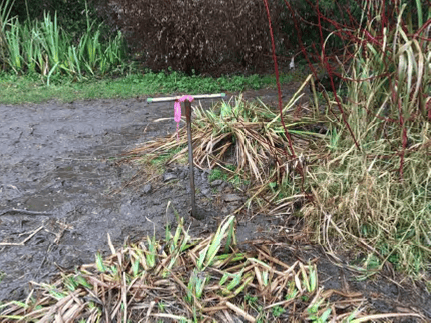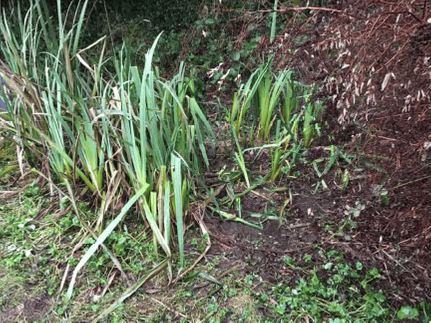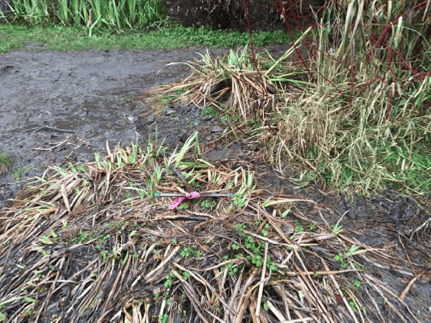Recommendations
The Restore East Harrison Initiative is calling on elected officials, SDOT and SDCI to comply with city, state and federal laws regulating wetlands and their buffers and to restore the damage that has been done.



These photos are from the 2017 wetland delineation, showing what was once healthy wetland vegetation.
1. SDOT should install signage educating the public about environmentally sensitive areas
There are no signs on the East Harrison Shoreline Street End to warn visitors about the wetland or ecological functions of the SSE, or to encourage them to stay on paths. SDOT should install signage that shows the location of the wetland and other environmentally sensitive areas, and that encourage people to stay on paths. Beyond the existence of a wetland, the East Harrison Shoreline Street End is within the shoreline and shoreline setback to Lake Washington, and vegetation should be protected as vital to lake ecological functions. The understory of the shoreline setback is heavily affected by visitors in part because there are no signs informing people to stay on paths.
2. SDOT should consider public uses of the East Harrison Shoreline Street End that provide visual and physical access while protecting ecological functions – not degrading them
SDOT should also take actions to maintain visual and physical access but regulate uses to protect the ecological functions. The law mandates protection of ecological functions in the shoreline alongside public access and use. Currently, the unpermitted and unregulated use of the East Harrison Shoreline Street End is actively damaging the ecological functions of the SSE, thereby contradicting and violating the City’s policies that protect a healthy environment, shorelines, and wetlands. Best management practices for minimizing impacts on wetlands include, for example, using fencing, planting dense trees and vegetation to discourage disturbance, and “locating activity that generates noise away from the wetland”. It is common practice to use fencing and signage to protect wetlands.
3. SDOT should prevent illegal ongoing use of the East Harrison Shoreline Street End for off-leash dogs
Photos on the website show examples of off-leash dogs that people take to the East Harrison Shoreline Street End to run, swim, and dig. It is unlawful for owners to permit dogs to “be at large” or to “damage public property” in Seattle. The East Harrison Shoreline Street End is not a park but, by way of comparison, the Parks Code prohibits off-leash dogs in parks that are not designated as off-leash dog parks.

